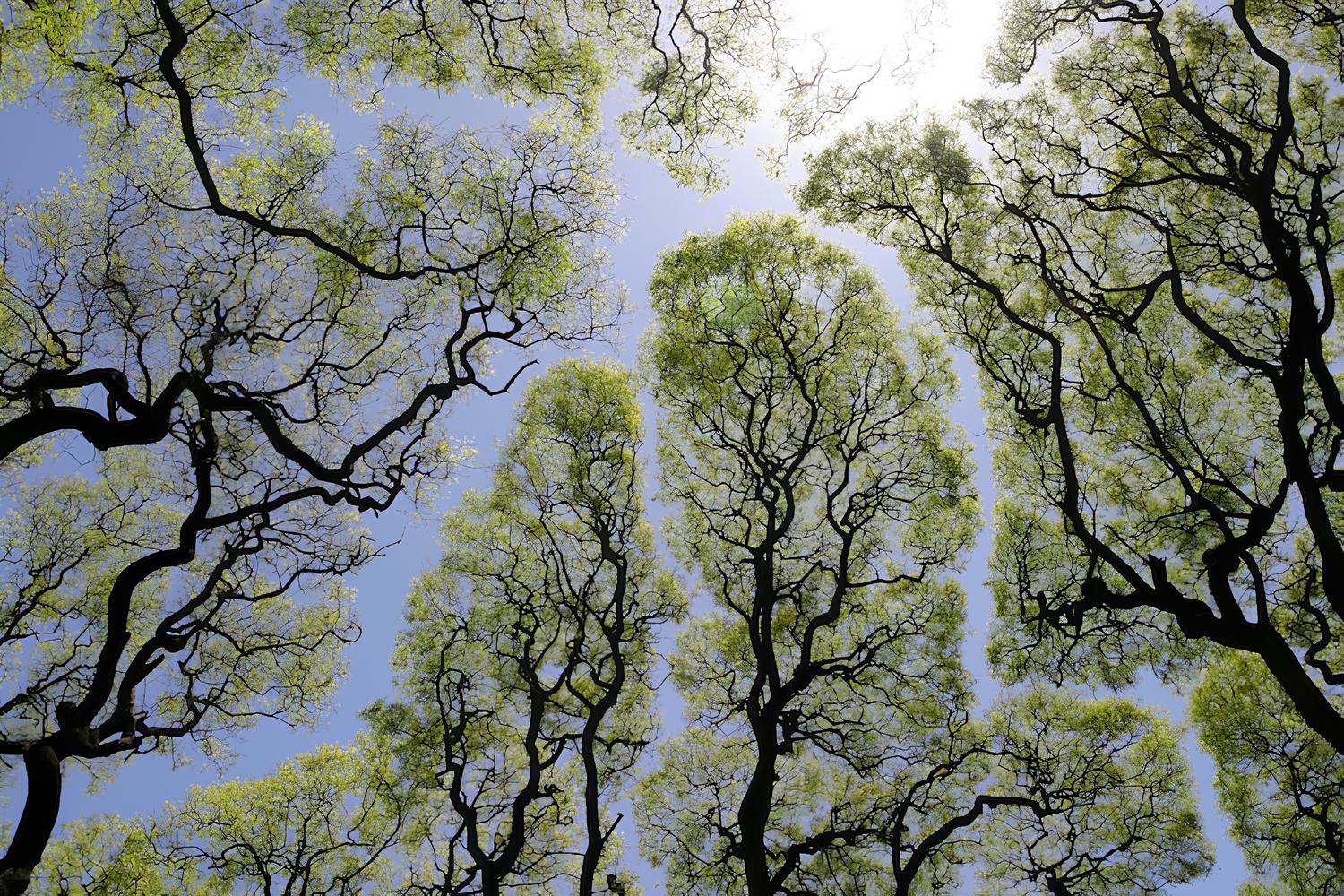You’ll notice something peculiar when you look up at some tall trees, like eucalyptus, Sitka spruce, and Japanese larch: the tallest branches don’t touch. Known as “crown shyness,” this innate tendency results in rupture-like patterns in the forest canopy that seem to accurately outline the lovely silhouettes of the trees.
Since scientists first began looking at the problem in the 1920s, crown shyness has been observed in trees of the same and different species in locations all over the world. Regardless of the type of tree or habitat, crown shyness has a similar appearance, with gaps that mimic meandering channels, zigzagging fractures, and winding rivers.
Although the exact reason why some trees react in this way is unknown, numerous specialists have put forth various possibilities. According to one explanation, it occurs when two tree branches, particularly those in areas with strong winds, collide. According to a different viewpoint, it enables perennial plants to receive the best light possible for photosynthesis. However, the most common theory is that the gaps prevent invasive insects from spreading.
Whatever the reason for this unusual event on a treetop, one thing is for sure: crown shyness makes for a fantastic photo opportunity!
Natural phenomena such as crack-like areas in the tree canopy are brought on by crown shyness.
Check out the phenomena in action below.












